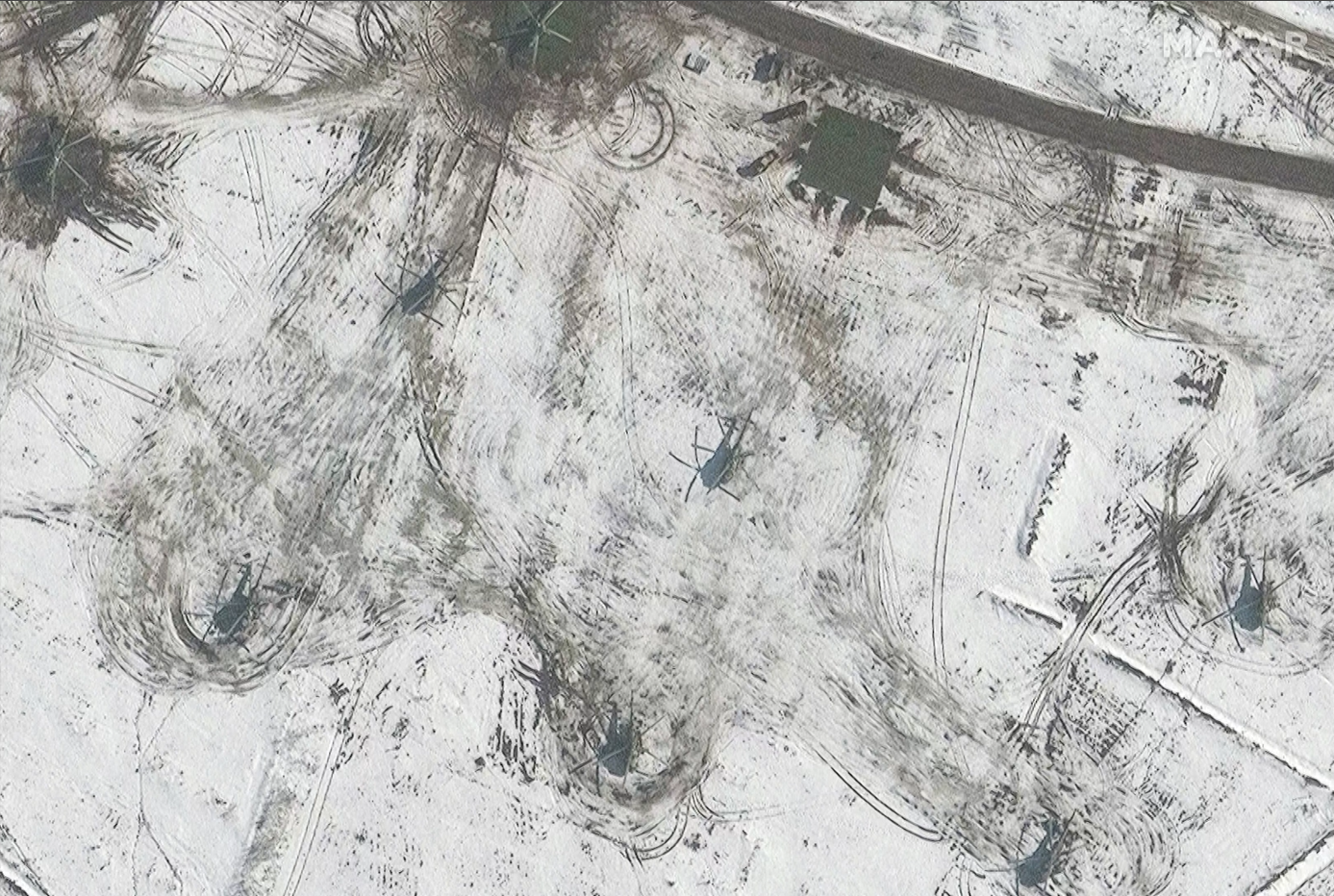On the evening of 21 February, Russian President Vladimir Putin recognised the independence of Donetsk and Lugansk in Ukraine and asked the Russian army to "maintain peace" in the two pro-Russian separatist regions. A few hours later, a column of armoured vehicles arrived on the outskirts of a town near Donetsk. But the military pressure stretches even further: in the north-east of Ukraine and in Belarus, the Russian army continues to build up troops, moving closer and closer to the border.
It only took hours for Putin's words to come to fruition. On the evening of February 21, the Russian president announced the "immediate" recognition of the self-proclaimed pro-Russian republics of Donetsk and Lugansk.
Early the next morning, a Reuters eyewitness filmed military vehicles near Donetsk, in the town of Makiivka. One of the tanks was a UR-77, according to Tom Bullock of Janes Intel, an open-source intelligence company, on Twitter. This tank is used to clear minefields with explosives and is a feature of the Russian arsenal.
The video appears to have been shot on the outskirts of Makiivka, identifiable from a visible sign emblazoned with the name of the town. The distinctive sign now has a "E" missing. The sign can be found here.

But Donetsk isn't the only place where Moscow is moving in. In other places along the Ukrainian border, military tension continues to mount.
Some camps emptying and others being set up
The Soloti camp in Russia's Belgorod Oblast is 24 km from Ukraine's north-eastern border. Since the tensions between Kyiv and Moscow began, it has been one of the main places where the Russian army has been amassing troops and equipment. However, since February 20, armoured vehicles have started leaving the area.
{{ scope.legend }}
© {{ scope.credits }}In Soloti, two areas (here and here) were partially or completely cleared of equipment between February 16 and 20, 2022. The US satellite imagery company Maxar claims that some of the Russian armour has moved farther south toward the border with Ukraine.
Even closer to Ukraine, a satellite image taken on February 20 shows the Russian camp at Valuyki, 17 km from the border, just south of Soloti. This time, helicopters (of the Mi-8 family, which can carry troops and which have limited ground attack capabilities) are there, with visible markings on the ground around them, which could indicate recent movement.

Other satellite images of Valuyki camp, taken on February 15 and 20, show movement and reduction of the snow on the ground, suggesting that vehicles have been moving there recently.
{{ scope.legend }}
© {{ scope.credits }}The Russian army has set up other camps in different places since February 15. Since then, the Swiss internet user Coupsure has identified at least seven of them. For example, one is near Soloti and Valuyki, even closer to the Ukrainian border. Another has been set up in Belarus, near the Pripyat River, less than 3 km from the Ukrainian border.
Identification marks painted on Russian tank
Another sign of the increasing power of Russian troops is the appearance of "Z" identification marks on certain vehicles, which allows crews to recognise each other, differentiating Russian equipment from almost identical Ukrainian equipment. On some of the tanks, anti-missile protection has been installed on the top of the turret.

In north Belarus, troop movements are also visible on social networks. A video posted on February 21 was shot near the village of Novaya Greblya, 12 km from the border with Ukraine. The convoy, which appears to belong to the Russian National Guard, is heading south towards Ukraine. Looking at the Mapillary application, which lists photos taken from roads around the world, there are at least two points of comparison between the photos and the video.

Following Vladimir Putin's statements, German Chancellor Olaf Scholz halted the Nord Stream 2 gas pipeline. The European Union has proposed banning Russian authorities from accessing European financial markets and targeting banks financing Russian military operations in Ukraine's breakaway regions, according to a European Commission and Council statement.







